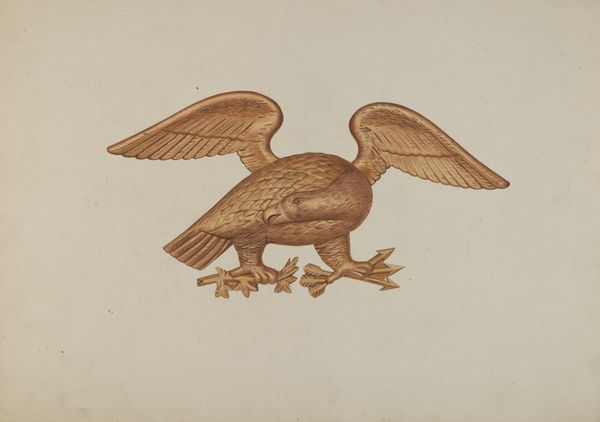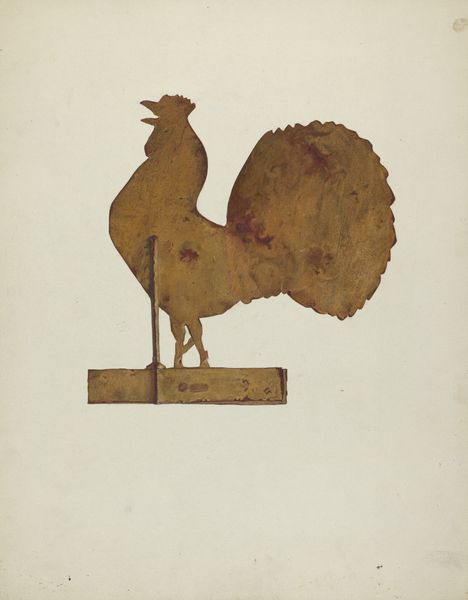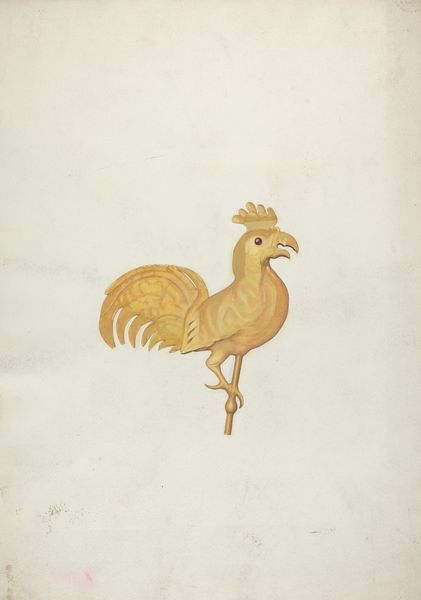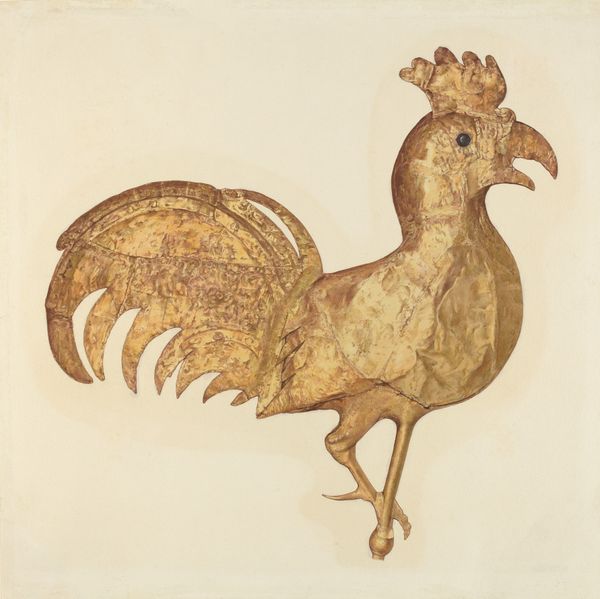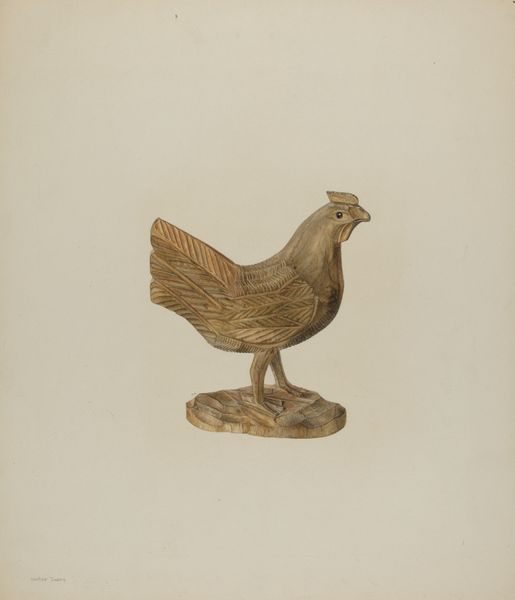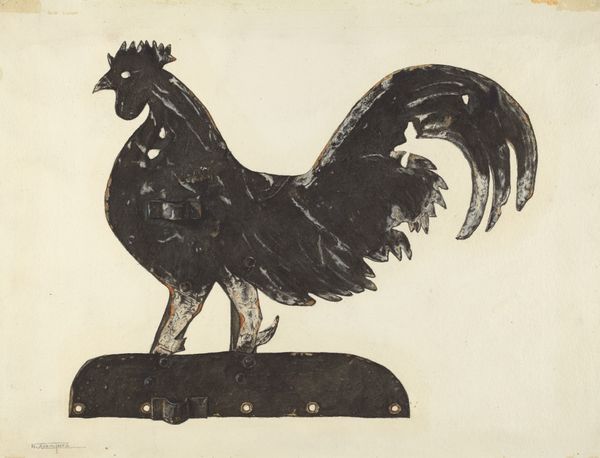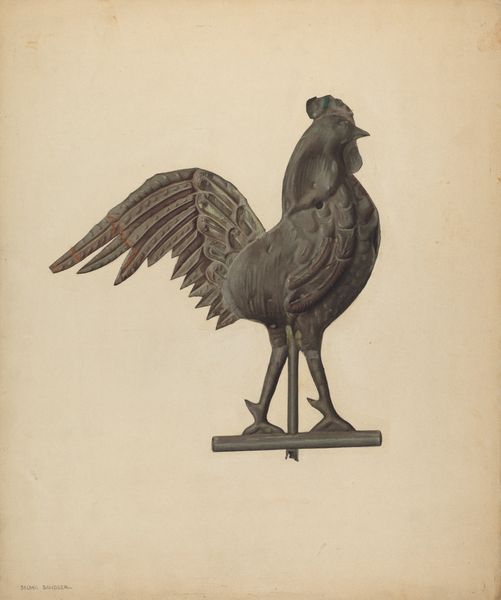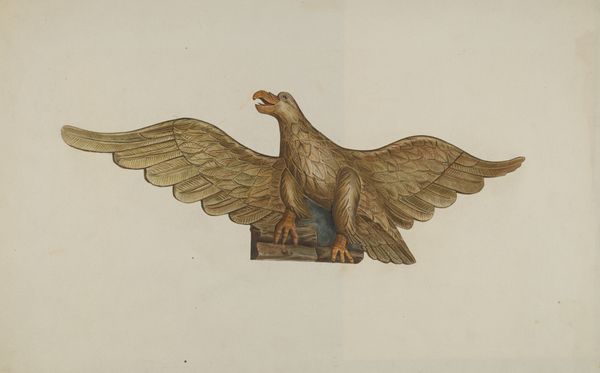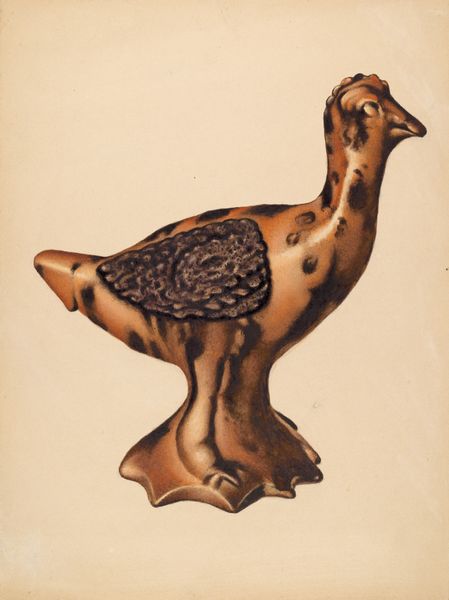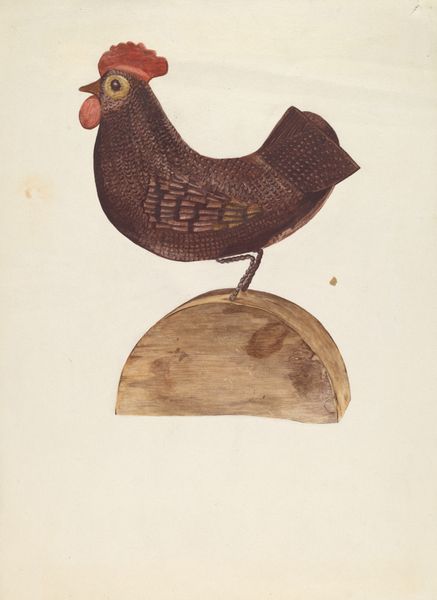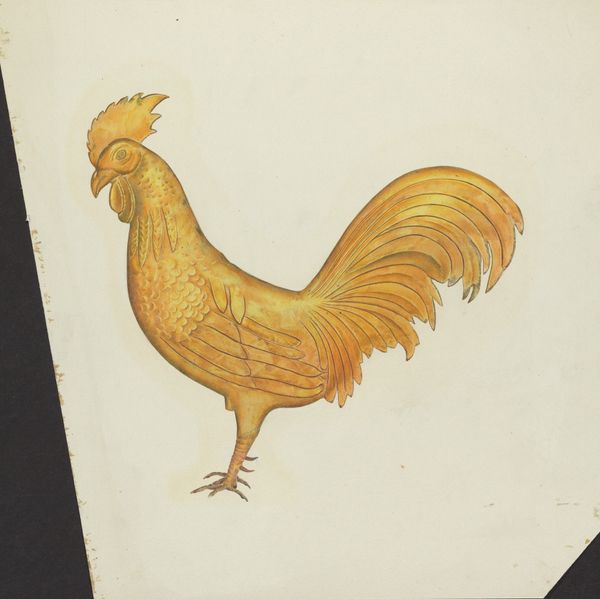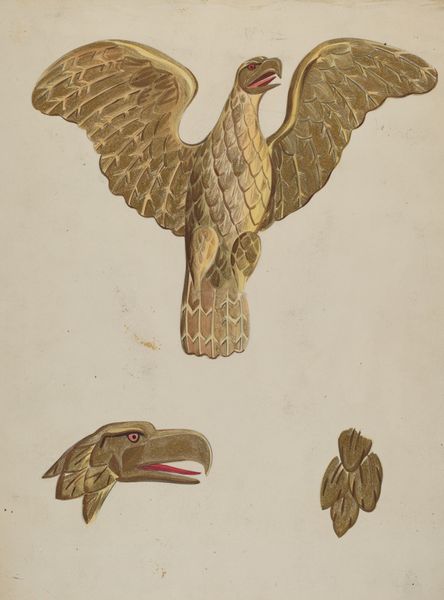
drawing, coloured-pencil
#
drawing
#
coloured-pencil
#
coloured pencil
#
watercolour illustration
#
decorative-art
#
watercolor
Dimensions: overall: 22.9 x 25.9 cm (9 x 10 3/16 in.)
Copyright: National Gallery of Art: CC0 1.0
Curator: So, we're looking at Tulita Westfall's "Pin," created sometime between 1935 and 1942, a drawing using colored pencil. What's your first impression? Editor: I find it visually striking; the golden hues create a captivating effect, like it is suspended in mid-air. The smaller bird figures repeat the aesthetic, which really draws your attention. What layers do you see in this piece? Curator: This image is a perfect entry point to discussing how identity and cultural heritage are articulated through visual representation. This work begs the question, "What is Westfall trying to tell us about her experience and position within society, by using such seemingly simple imagery?" Is it decorative art, or something more loaded with meaning? Editor: I suppose, from the title, "Pin," the work could suggest how people might perceive or "pin" identities onto her. And, yes, you're right that I was quick to dismiss it as merely decorative at first glance. I feel like I may have played into a pre-conceived role of women and domestic craft. Is that reading too much into it? Curator: Absolutely not. Consider the historical context: this was created during a time when many Indigenous artists were navigating a complex relationship with mainstream American culture. The ‘pin’ can be a symbol of connection but also of constraint. We must look closely at whose standards are being applied here. Could this be a subversive act, or reclaiming ownership? Editor: So, viewing it through an intersectional lens reveals a tension between cultural expression and external pressures? I can now understand how crucial historical context is in forming my reading. Curator: Precisely. By examining art through a feminist lens, coupled with its cultural origins, we are no longer passively consuming it. Instead, we’re actively engaging in a dialogue, uncovering richer, more nuanced meanings that reflect lived experience. Editor: Thank you. I now have a completely new appreciation for Westfall’s art, understanding it as a piece engaging with cultural identity, and societal expectations.
Comments
No comments
Be the first to comment and join the conversation on the ultimate creative platform.
